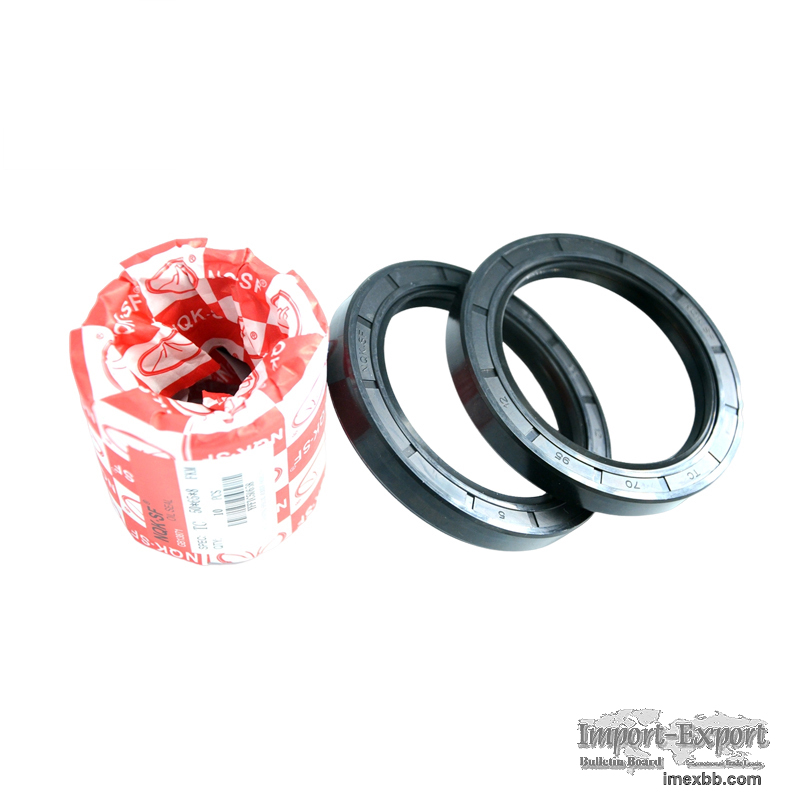 |
 |
Home > Offers to Sell > Others & Excess Inventory > Others
| Contact: | junyingliu |
|---|---|
| Company: | Xingtai Shanfeng special rubber products Co., Ltd |
| Hetou Industrial Zone, Renze District, Xingtai City, Hebei Province | |
| Xingtai City, Hebei | |
| China | |
| Phone: | 18713908608 |
| E-Mail: | |
| Date/Time: | 8/10/24 2:38 GMT |
Oil Seal Manufacturers NBR HNBR PTFE Wear Resistant TC Oil Seal
TC oil seals known for their twin-lip design, are widely used in various
mechanical systems to prevent the leakage of fluids and to keep contaminants
out. While TC oil seals are highly effective, their performance can be
compromised if not properly managed. This article explores several key
considerations to keep in mind when using TC oil seals to ensure their optimal
functionality and longevity.
The use of TC oil seals is essential in many industries, including
automotive, industrial machinery, and hydraulic systems. These seals are
designed to maintain the integrity of fluid systems by preventing leaks and
excluding contaminants. However, like any mechanical component, their
effectiveness relies heavily on proper usage and maintenance.
Installation Considerations
Correct Sizing: One of the most critical factors when using TC oil seals is
ensuring they are the correct size for the application. An incorrectly sized
seal can lead to improper fitment, causing leaks or seal failure. It is
essential to measure both the shaft and housing accurately before selecting the
seal size.
Proper Alignment: Misalignment of the seal during installation can cause
uneven wear, leading to premature failure. Ensuring that the seal is aligned
correctly with the shaft and housing during installation is crucial for its
long-term performance.
Avoiding Damage During Installation: Care should be taken not to damage the
sealing lips during installation. The use of proper installation tools, such as
seal drivers, can help avoid nicks and cuts that could compromise the seal's
effectiveness.
Environmental Factors
Temperature Extremes: TC oil seals are designed to operate within specific
temperature ranges. Exposing the seal to temperatures beyond its rated limits
can cause material degradation, leading to failure. It is important to consider
the operating environment and select a seal material that can withstand the
expected temperature extremes.
Contaminant Exposure: While TC oil seals are effective at keeping
contaminants out, they can be overwhelmed in excessively dirty environments.
Ensuring that the environment is as clean as possible or using additional
protective measures, such as dust covers, can enhance the seal's longevity.
Lubrication Compatibility: The type of lubricant used can have a
significant impact on the performance of TC oil seals. It is essential to
ensure that the lubricant is compatible with the seal material to prevent
swelling, hardening, or degradation of the seal. Incompatible lubricants can
cause the seal to lose its elasticity, leading to leaks.
Maintenance and Monitoring
Regular Inspection: Regularly inspecting the condition of TC oil seals is
crucial for early detection of wear and tear. Monitoring for signs of leaks,
cracks, or hardening can help identify potential issues before they lead to
significant damage.
Timely Replacement: Oil seals have a finite lifespan, and waiting too long
to replace a worn seal can result in more severe damage to the system.
Replacing seals at the first sign of wear can prevent costly repairs and
downtime.
Proper Handling and Storage: Before installation, TC oil seals should be
stored properly to avoid damage. They should be kept in a cool, dry place, away
from direct sunlight and chemicals that could degrade the material.
While TC oil seals are highly effective at maintaining the integrity of
fluid systems, their performance is heavily dependent on proper usage,
installation, and maintenance. Paying attention to factors such as correct
sizing, alignment, environmental conditions, and regular inspection can
significantly extend the life of these seals and ensure the optimal performance
of the systems they protect.
Minimum Order: 500 pieces
SOURCE: Import-Export Bulletin Board (https://www.imexbb.com/)
Similar Products:Not exactly what you are looking for? Post an Offer to Buy!
![]()
© 1996-2010 IMEXBB.com. All rights reserved.
|
|
|





